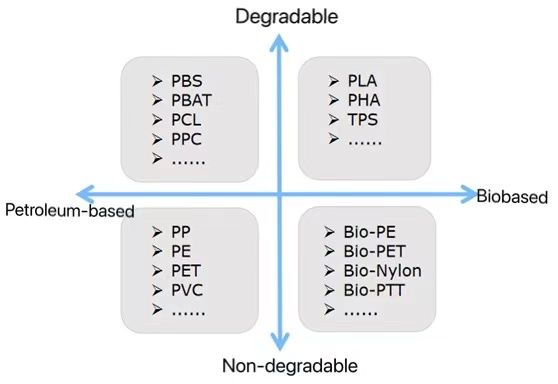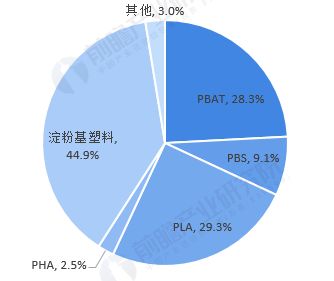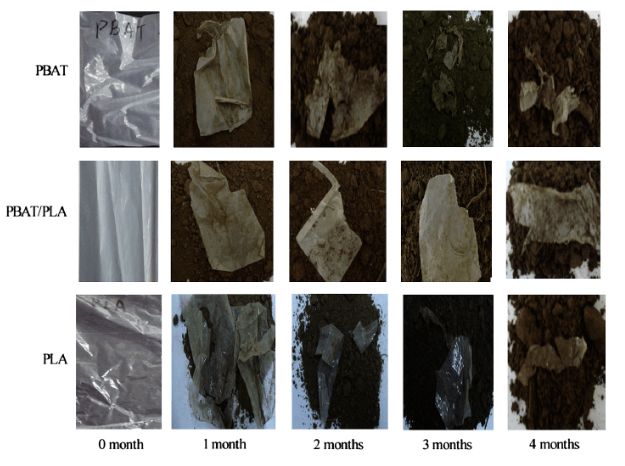The definition of biodegradable plastics, it is to point to in nature, such as soil, sand, water environment, water environment, certain conditions such as composting and anaerobic digestion conditions, the degradation caused by microbial action of the existence of nature, and eventually decomposed into carbon dioxide (CO2) and/or methane (CH4), water (H2O) and mineralization of the containing element inorganic salt, and the new biomass (such as the body of microorganisms, etc.) of plastic.
Comparison of several common biodegradable plastics
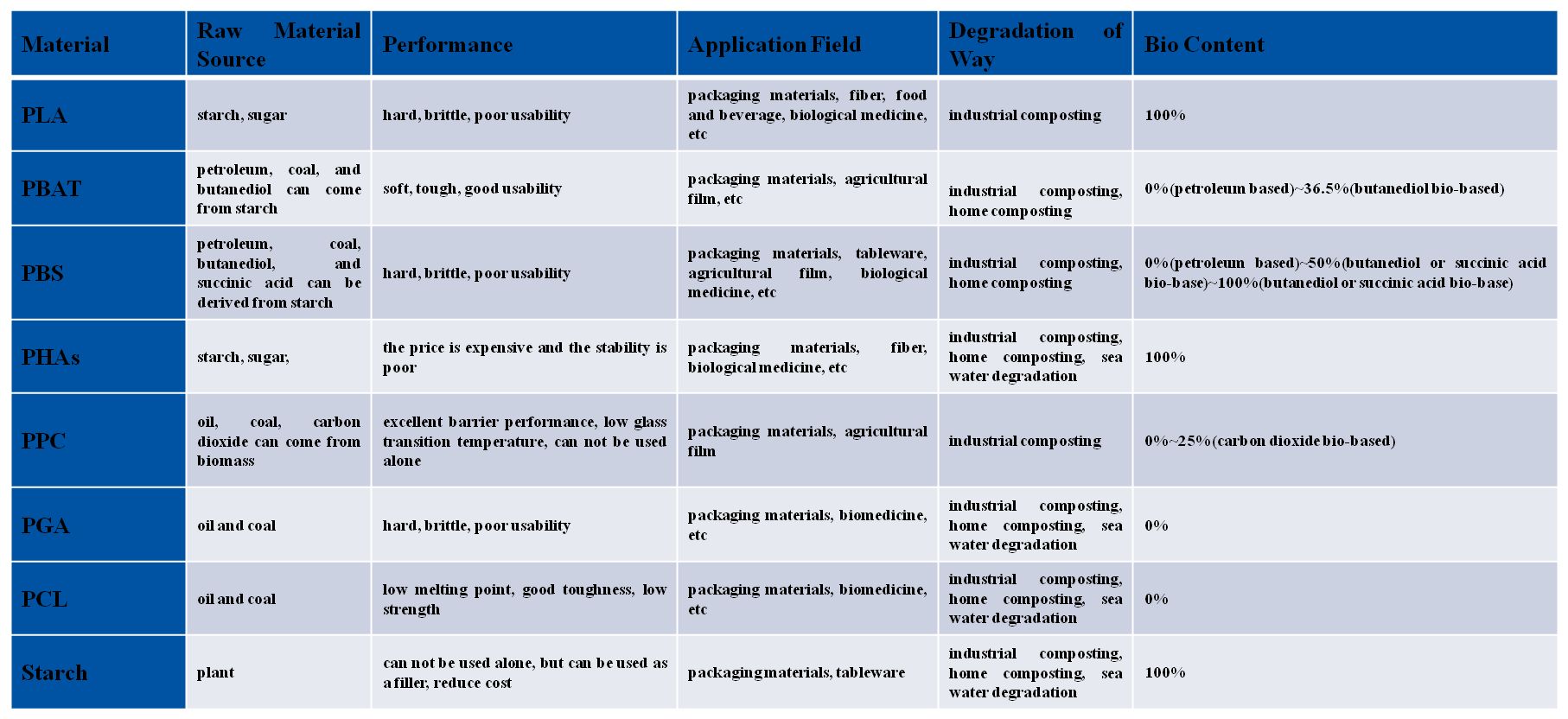
Productivity and distribution of biodegradable plastics
According to the latest data released by the European Bioplastics Association in September 2019, as of September 2019, the global annual production capacity of biodegradable plastics is 2144,000 tons;
PLA (polylactic acid) was 628,000 tons, accounting for 29.3%;
PBAT (polyadipic acid/butylene terephthalate) was 606,800 tons, accounting for 28.3%;
Starch-based degradable plastic was 96.27 tons, accounting for 44.9% of the global biodegradable plastic capacity.
Global distribution of biodegradable plastics capacity in 2019
(Unit: %)
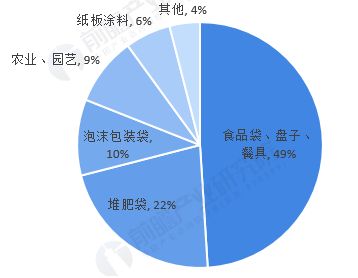
Global downstream demand for biodegradable plastics in 2019
(Unit: %)
Biodegradable condition
The soil degradation
PBAT, PHA, PCL and PBS could be completely degraded after 5 months.
The degradation rate of PLA materials is relatively slow, only 0.23% a year.
PLA and PKAT can be completely degraded in about half a year after blending.
The water degradation
PHA and PKAT can be completely degraded in 30~60 days under the simulated seawater condition of 25℃±3℃.
Post time: 02-12-22


